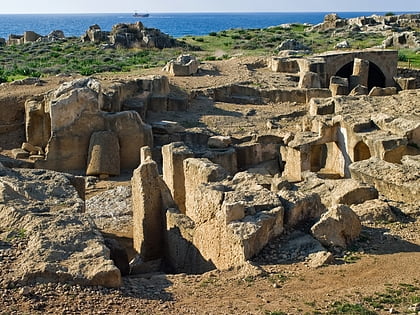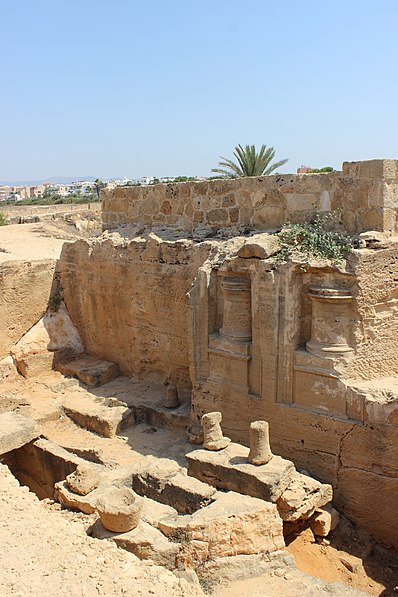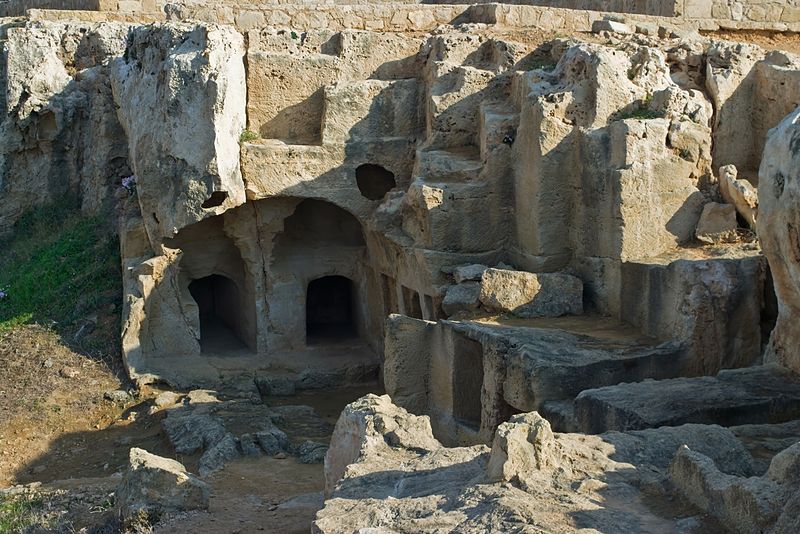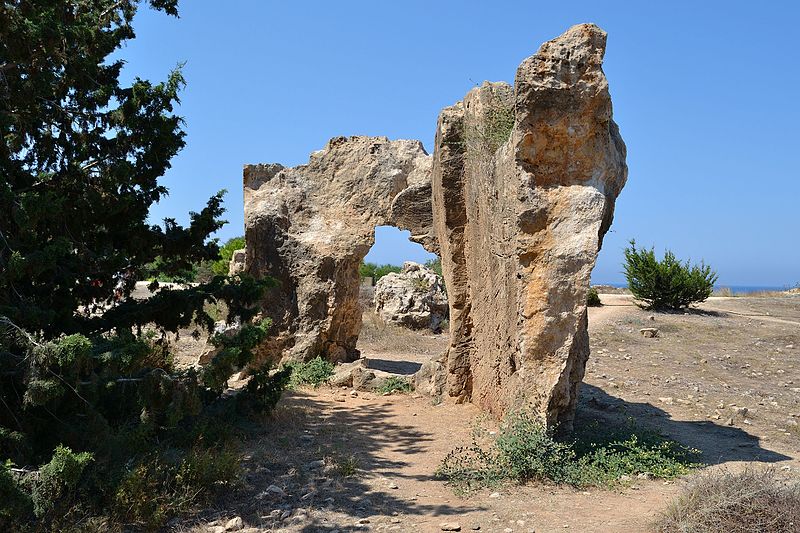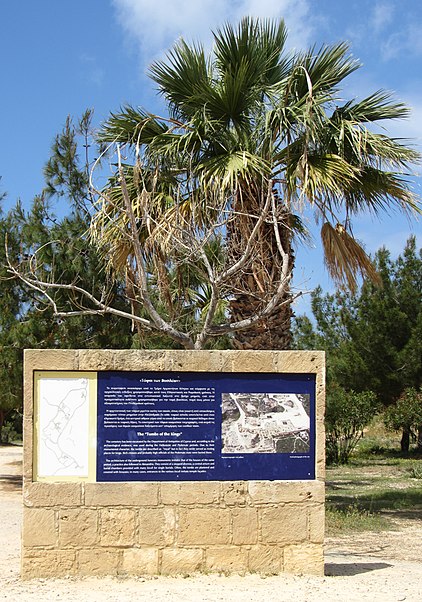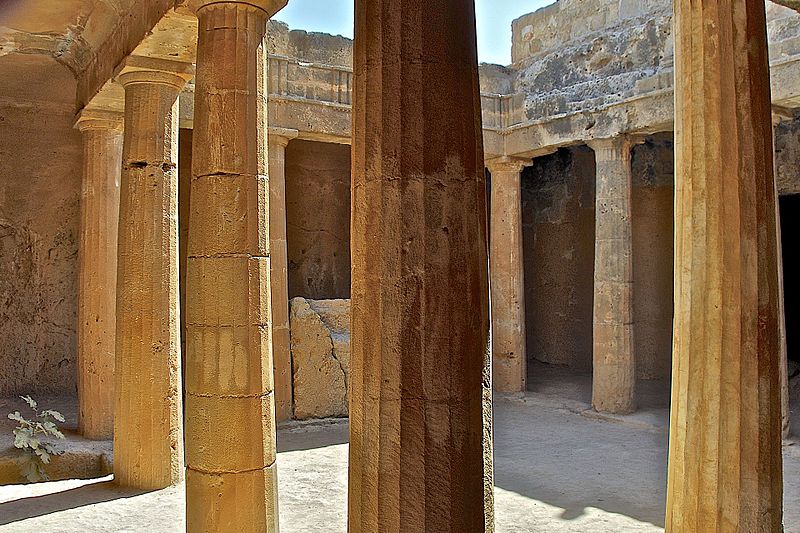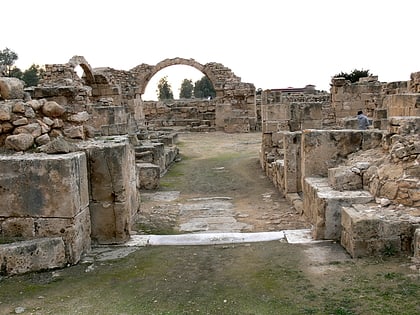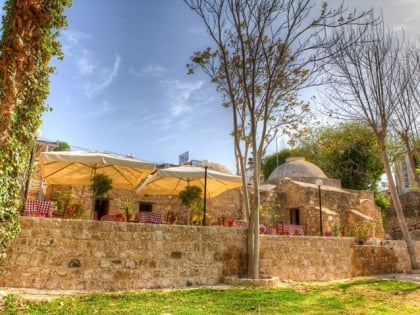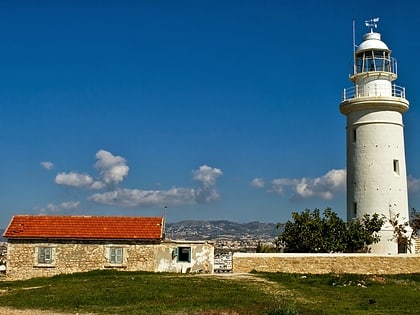Tombs of the Kings, Paphos
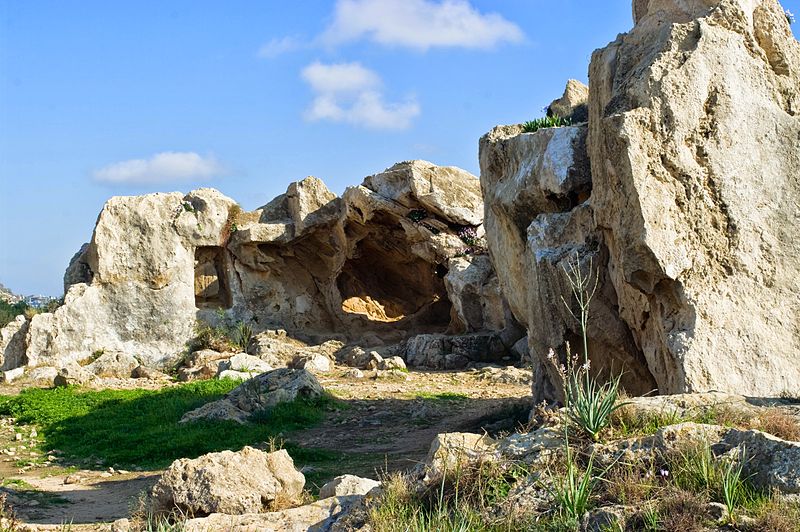
Facts and practical information
The Tombs of the Kings is an ancient necropolis that forms a striking cultural landmark in the coastal city of Paphos, Cyprus. This archaeological site, a UNESCO World Heritage Site since 1980, dates back to the 4th century BC and is a testament to the Hellenistic and Roman periods on the island.
Despite its name, the Tombs of the Kings was not the final resting place of royalty but rather of high-ranking officials and Paphos aristocracy. The site is famed for its impressive underground tombs, many of which are carved directly into the rock, and feature Doric pillars and frescoed walls, reflecting the architectural grandeur of the eras they were built in.
Spanning a vast area, the necropolis contains a network of tombs, each uniquely designed with atriums and antechambers. The tombs are characterized by their large courtyards surrounded by columns, some of which descend into the ground, creating a dramatic setting for the final rites of the ancient Cypriots.
Visitors to the Tombs of the Kings can explore the open-air site, where the sunbaked landscape reveals a blend of natural rock formations and carefully sculpted architecture. The tombs are accessible to the public and offer a glimpse into the burial customs and beliefs of the ancient civilizations that once thrived on the island.
This archaeological treasure is not only of historical significance but also provides a unique cultural experience for those interested in the ancient world. Its close proximity to the sea adds to the serene atmosphere, making it a memorable visit for tourists and historians alike.
Tombs of the Kings – popular in the area (distance from the attraction)
Nearby attractions include: Saranta Kolones, Church of Panagia Theoskepasti, Hamam Cafe Lounge Bar, Paphos Lighthouse.
Frequently Asked Questions (FAQ)
Which popular attractions are close to Tombs of the Kings?
How to get to Tombs of the Kings by public transport?
Bus
- Tombs of the Kings 12 615 • Lines: 615 (4 min walk)
- Gymnasio Theoskepastis (10 min walk)
